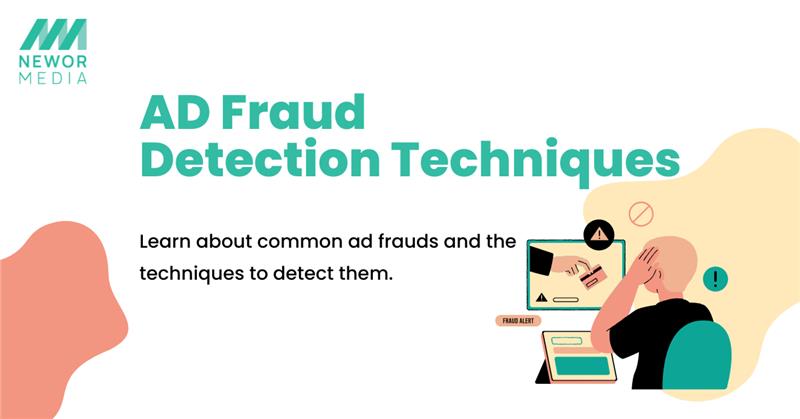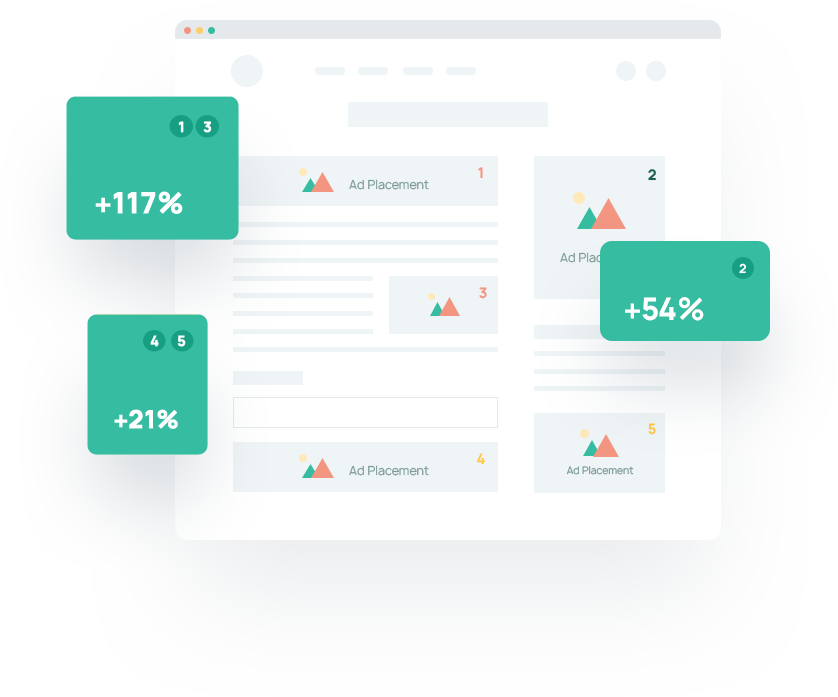If you’re a publisher making money through programmatic advertising, you’ve probably felt it, the invisible drag on your earnings. Despite increasing traffic, RPMs stay flat. You optimise your content, improve site speed, and switch to lazy loading. But something’s still off. Maybe it’s time to think like a pro: consider the fast media buyer career mindset, always adapting, always watching for inefficiencies, especially when it comes to ad fraud.
Here’s a possibility you can’t afford to ignore ad fraud.
Digital ad fraud is a multi-billion-dollar problem siphoning money from advertisers, and ultimately, from you. The good news? You don’t need to be a cybersecurity expert to fight back. With the right ad fraud detection techniques, you can defend your site, protect your ad inventory, and earn what you’re truly worth.
Let’s break it down step-by-step:
- What ad fraud looks like in real life
- Why publishers need to care (and how it hits your wallet)
- Proven ad fraud detection techniques you can use
- Tools, signals, and tech that make fraud visible
- How Newor Media helps publishers stay protected
This is your complete, non-technical, publisher-first guide to spotting and stopping ad fraud before it eats into your bottom line.
What Is Ad Fraud, And Why Is It So Sneaky?
We covered this in depth in Ad Fraud: What You Need to Know, but here’s the core idea:
Ad fraud happens when fake or deceptive activity tricks advertisers into paying for impressions, clicks, or conversions that didn’t come from real humans.
The most common types include:
- Bot traffic (automated systems mimicking real visitors)
- Click farms (low-wage workers manually clicking ads)
- Domain spoofing (fraudsters posing as premium sites)
- Ad stacking (multiple ads layered on top of one another)
- Pixel stuffing (ads hidden in a single pixel so they’re never seen)
And here’s the kicker: Even if you’re not doing anything shady, your inventory can be compromised, by bad actors buying your remnant traffic, shady intermediaries, or outdated ad tech.
Why Publishers Should Care: It’s Not Just the Advertiser’s Problem
At first glance, you might think: “Well, if someone’s faking a click, isn’t the advertiser the only one getting duped?”
Not quite.
Here’s how ad fraud hits you, the publisher:
1. Reduced Revenue
Fraud makes advertisers nervous. When fraud rates spike, demand drops and that lowers CPMs across the board, even for honest sites.
2. Blacklisting
If fraud is detected on your site even unintentionally, you could get flagged or blacklisted by SSPs, DSPs, or advertisers. That means lost deals, slashed fill rates, and a damaged reputation.
3. Bad Ad Quality
Fraud thrives in low-quality environments. If bad players are hijacking your ad slots, your users might see irrelevant, malicious, or misleading ads. That hurts your UX, increases bounce rates, and damages trust, which ultimately reduces your earning power.
In short: Ad fraud = less money, worse ads, and higher risk. That’s why every serious publisher should get proactive about ad fraud detection.
For more on this, check out our blog: Ad Fraud: What Publishers Need to Know.
Ad Fraud Detection Techniques That Actually Work
So, what can you do to catch and stop ad fraud?
Let’s walk through the most effective techniques, some manual, some tech-based, and many baked into the platforms you already use.
1. Traffic Quality Analysis
Start simple: look at your traffic sources.
Ask:
- Are you getting an unusual amount of traffic from unfamiliar countries?
- Are visits spiking overnight with no clear referral source?
- Do you see high bounce rates, low session durations, or 100% new visitor sessions?
These are classic red flags of bot traffic. Use tools like Google Analytics 4, Cloudflare, or TrafficGuard to break down behavior metrics and spot anomalies.
Publisher tip: If you’re running paid promotions (e.g. Facebook ads), isolate your campaigns with UTM tags so you don’t mix clean and suspicious traffic.
2. Human vs. Bot Detection
Sophisticated bots mimic human behavior, mouse movements, scrolls, even fake logins. But they often fail at the fine details.
To detect them, look for:
- Clicks with zero dwell time
- Sessions with identical mouse paths
- No cookies or JavaScript support (bots often disable both)
Using CAPTCHAs, fingerprinting libraries, and server-side validation (e.g., header checks) can help filter them out.
Note: If you’re working with a monetization partner like Newor Media, much of this is handled for you through layered ad stack security.
3. Invalid Traffic (IVT) Filters
Most ad fraud detection begins by separating traffic into:
- General Invalid Traffic (GIVT): Easily detected fraud like data center traffic or known bots
- Sophisticated Invalid Traffic (SIVT): Harder-to-spot fraud like emulators, click injection, and device spoofing
High-quality demand platforms filter IVT before the bid even happens. Still, monitoring post-bid traffic is crucial, especially if you work with multiple ad partners.
Newor Media helps ensure fraud is caught both pre-bid and post-bid, giving publishers a stronger shield across their entire stack
4. Domain and App Spoofing Detection
Imagine your site is example.com. Fraudsters can fake your domain (e.g., examp1e.com) and trick advertisers into thinking their ad will appear on your site.
The fix?
Use ads.txt and app-ads.txt files.
These text files:
- Declare who’s authorized to sell your ad inventory
- Prevent spoofed domains from getting paid
- Improve transparency across exchanges
Keep these files updated and double-check with your monetization partner that they’re being respected across all platforms.
5. Machine Learning & Pattern Recognition
This one’s more advanced, but worth understanding.
AI-driven ad fraud detection uses behavioral data to identify patterns over time:
- If one IP clicks 1,000 ads in 10 minutes, that’s suspicious.
- If multiple devices exhibit the same exact ad scroll and click path, that’s likely scripted.
Platforms like Pixalate, Integral Ad Science (IAS), and White Ops (now Human Security) use ML to flag unusual behavior and train systems to improve accuracy over time.
While these tools are enterprise-level, Newor Media’s professional ad management platform leverages similar machine learning models under the hood, so smaller publishers can benefit without the overhead.
Bonus: Extra Tools & Signals to Boost Detection
Here are a few other markers you can look for in your logs or analytics tools:
| Signal | Potential Fraud Type |
| Repeated clicks from same IP/device | Click fraud |
| Non-human user agents | Bot traffic |
| Missing referer headers | Spoofing or cloaking |
| Out-of-sync timestamps | Emulated traffic |
| Device info mismatch | Spoofed environments |
How Newor Media Helps Publishers Fight Ad Fraud?
You’re not in this alone.
At Newor Media, we believe protecting publisher revenue starts with trust and transparency. Here’s how we help you stay safe:
Pre-Bid Protection
We work with top-tier ad exchanges and filter out known fraud before the ad ever loads.
Post-Bid Verification
Using internal analytics and external fraud detection partners, we validate traffic after the impression too, because fraud evolves.
Transparent Reporting
Our dashboard shows real traffic trends, performance breakdowns, and revenue insights so you’re never guessing what’s legit.
Clean Demand Partners
We vet every partner in our ad stack. No shady networks. No resellers playing games. Just verified demand, so your site stays clean.
Personalized Support
If anything looks suspicious, our team flags it early often before you even notice it. We’ve helped dozens of publishers clean up their stack and reclaim lost revenue.
Bottom line? We handle the complexity, so you can focus on growth.
Ad Fraud Prevention: What You Can Do Today
You don’t need a giant engineering team to start making smart moves. Here are a few things you can do right now:
- Check your traffic sources and look for red flags
- Add or update your ads.txt and app-ads.txt files
- Review your analytics for strange bounce rates or session durations
- Ask your monetization partner how they handle fraud (seriously ask!)
- Audit your ad stack and remove any unknown or underperforming networks
The faster you act, the more you protect your earning potential.
Final Thoughts: Every Dollar Counts
As a publisher, you work hard to drive quality content, engage your audience, and build meaningful traffic. Ad fraud threatens all of that from behind the scenes. But with smart detection techniques and the right partners, you don’t have to be a victim.
Knowledge is power. Visibility is protection.
And when you’re backed by fraud-fighting tech like what we offer at Newor Media, you’re not just preserving your revenue, you’re leveling up your earning power.


One Comment
Comments are closed